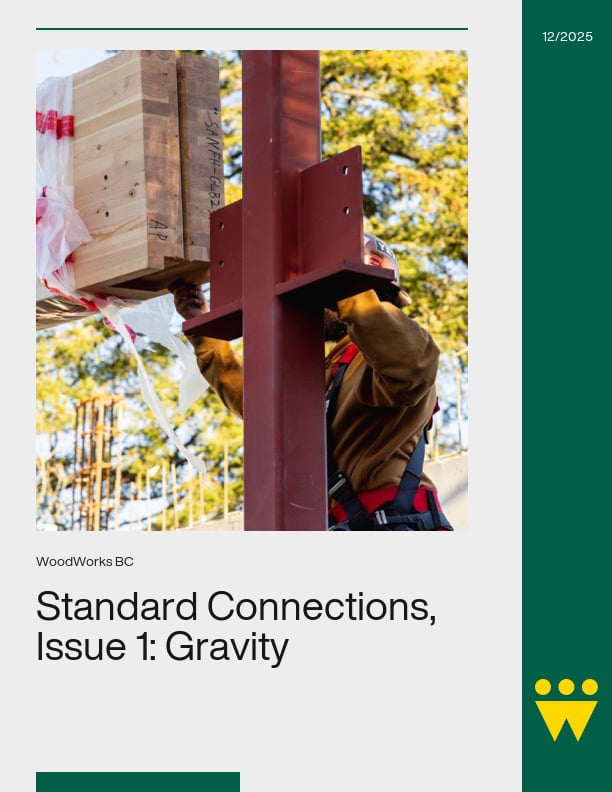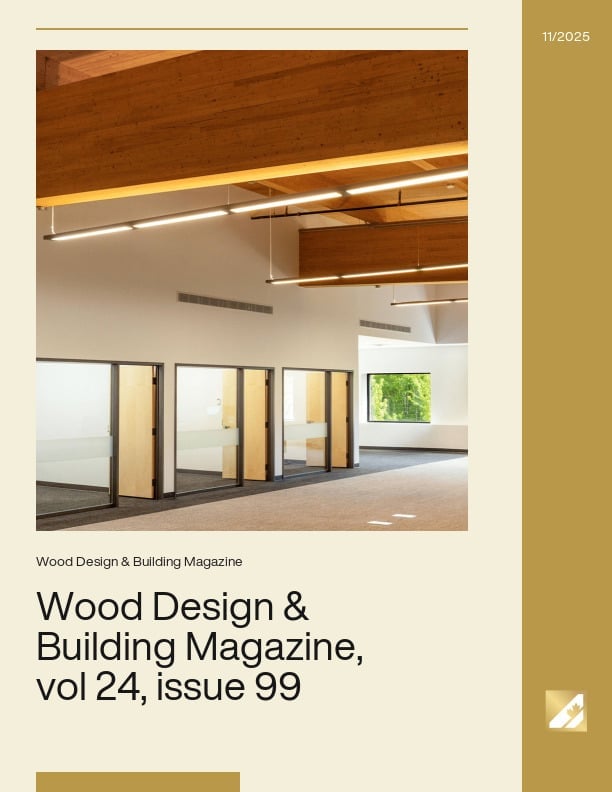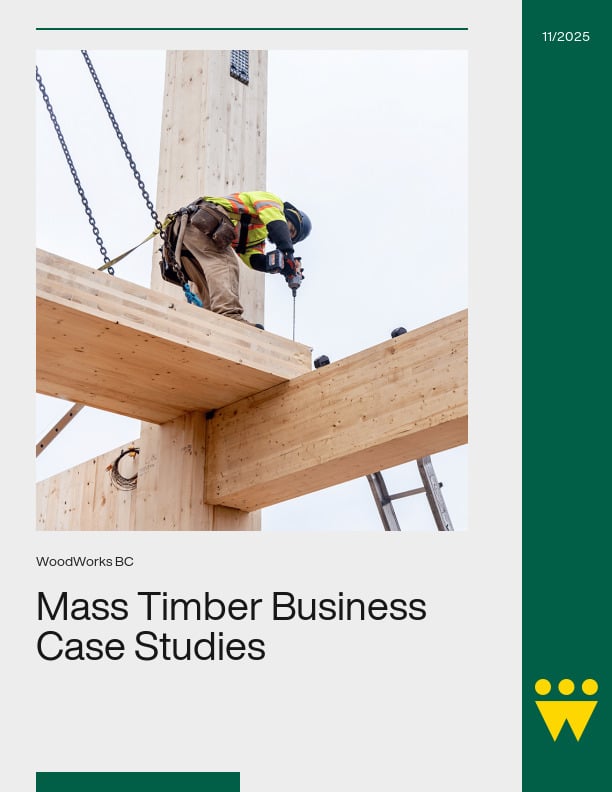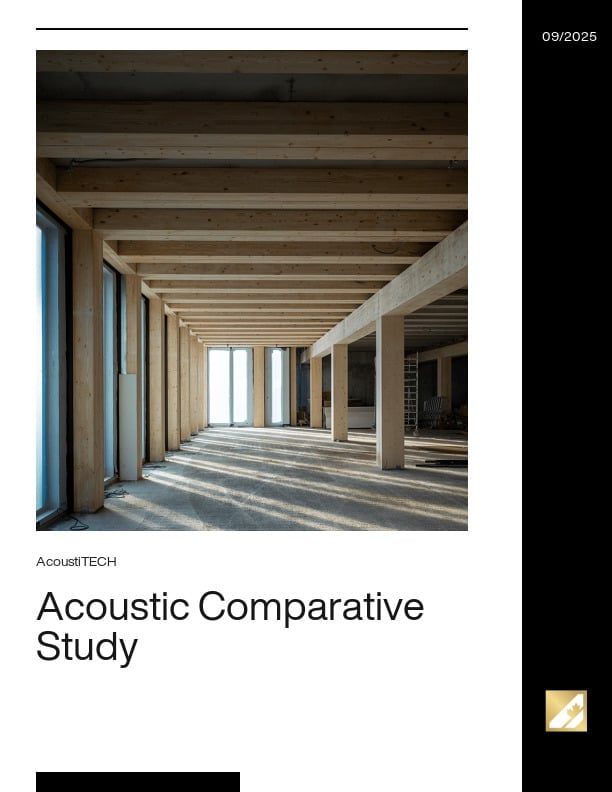Flame spread is primarily a surface burning characteristic of materials, and a flame-spread rating is a way to compare how rapid flame spreads on the surface of one material compared to another.
Flame-spread rating requirements are applied in the National Building Code of Canada (NBC) primarily to regulate interior finishes.
Any material that forms part of the building interior and is directly exposed is considered to be an interior finish. This includes interior claddings, flooring, carpeting, doors, trim, windows, and lighting elements.
If no cladding is installed on the interior side of an exterior wall of a building, then the interior surfaces of the wall assembly are considered to be the interior finish, for example, unfinished post and beam construction. Similarly, if no ceiling is installed beneath a floor or roof assembly, the unfinished exposed deck and structural members are considered to be the interior ceiling finish.
The standard test method that the NBC references for the determination of flame spread ratings is CAN/ULC-S102, published by ULC Standards.
Appendix D-3 of the NBC, Division B, provides information related to generic flame-spread ratings and smoke developed classifications of a variety of building materials.
Information is only provided for generic materials for which extensive fire test data is available (refer to Table 1 below). For instance, lumber, regardless of species, and Douglas fir, poplar, and spruce plywood, of a thickness not less than those listed, are assigned a flame-spread rating of 150.
In general, for wood products up to 25 mm (1 in) thick, the flame-spread rating decreases with increasing thickness. Values given in the Appendix D of the NBC are conservative because they are intended to cover a wide range of materials. Specific species and thicknesses may have values much lower than those listed in Appendix D.
The American Wood Council has additional information in their Design for Code Acceptance publication, DCA 1 Flame Spread Performance of Wood Products for the U.S.
Normally, the surface finish and the material to which it is applied both contribute to the overall flame-spread performance. Most surface coatings such as paint and wallpaper are usually less than 1 mm thick and will not contribute significantly to the overall rating.
This is why the NBC assigns the same flame-spread and smoke developed rating to common materials such as plywood, lumber and gypsum wallboard whether they are unfinished or covered with paint, varnish or cellulosic wallpaper.
There are also special fire-retardant paints and coatings that can substantially reduce the flame-spread rating of an interior surface. These coatings are particularly useful when rehabilitating an older building to reduce the flame-spread rating of finish materials to acceptable levels, especially for those areas requiring a flame-spread rating no greater than 25.
In general, the NBC sets the maximum flame-spread rating for interior wall and ceiling finishes at 150, which can be met by most wood products.
For example, 6 mm (1/4 in) Douglas Fir plywood may be unfinished, painted, varnished or covered with conventional cellulosic wallpaper. This has been found to be acceptable on the basis of actual fire experience.
This means that in all areas where a flame-spread rating of 150 is permitted, the majority of wood products may be used as interior finishes without special requirements for fire-retardant treatments or coatings.
In a room fire, the flooring is usually the last item to be ignited, since the coolest layer of air is near the floor. For this reason, the NBCC, like most other codes, does not regulate the flame-spread rating of flooring, with the exception of certain essential areas in high buildings:
- exits;
- corridors not within suites;
- elevator cars; and,
- service spaces.
Traditional flooring materials such as hardwood flooring and carpets can be used almost everywhere in buildings of any type of construction.
For further information, refer to the following resources:
Wood Design Manual (Canadian Wood Council)
Fire Safety Design in Buildings (Canadian Wood Council)
National Building Code of Canada
National Fire Code of Canada
CSA O86, Engineering design in wood
CAN/ULC-S102 Standard Method of Test for Surface Burning Characteristics of Building Materials and Assemblies
American Wood Council
Table 1 : Assigned flame-spread ratings and smoke developed classifications





